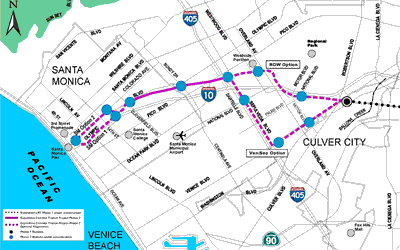 The California Air Resources Board (CARB) passed the AB 32 Scoping Plan Thursday (press release; LA Times).
The California Air Resources Board (CARB) passed the AB 32 Scoping Plan Thursday (press release; LA Times).
AB 32 is California's landmark 2006 law to reduce global warming emissions to 1990 levels by 2020, about 30% from business-as-usual projected for 2020, 15% from today’s levels. The long-range goal is 80% from 1990 levels by 2050.
The long-range goal is 80% from 1990 levels by 2050.
The largest two sectors of greenhouse gas emissions (left) are transportation — 38% — and electricity generation — 23%.
(click to enlarge) This timeline shows CARB's first milestones in 2007; developing the high-level Scoping Plan over the last year; and the upcoming detailed rulemaking through 2011 to implement it.
This timeline shows CARB's first milestones in 2007; developing the high-level Scoping Plan over the last year; and the upcoming detailed rulemaking through 2011 to implement it.
Following is the overview of how the Scoping Plan expects to reduce emissions.
Recommended Reduction Measures — Counted Towards 2020 Target (MMTCO2E*)
ESTIMATED REDUCTIONS FROM CAP AND TRADE PROGRAM AND COMPLEMENTARY MEASURES — 146.7
California Light-Duty Vehicle Greenhouse Gas Standards — 31.7
Energy Efficiency — 26.3
Renewables Portfolio Standard (33% by 2020) — 21.3
Low Carbon Fuel Standard — 15
Regional Transportation-Related GHG Targets — 5
Vehicle Efficiency Measures — 4.5
Goods Movement — 3.7
Million Solar Roofs — 2.1
Medium/Heavy Duty Vehicles — 1.4
High Speed Rail — 1.0
Industrial Measures (cap-and-trade sources) — 0.3
Additional Reductions Necessary to Achieve the Cap — 34.4
ESTIMATED REDUCTIONS FROM UNCAPPED SOURCES — 27.3
High Global Warming Potential Gas Measures — 20.2
Sustainable Forests — 5.0
Industrial Measures (non-cap and trade sources) — 1.1
Recycling and Waste (landfill methane capture) — 1.0
TOTAL REDUCTIONS COUNTED TOWARDS 2020 TARGET — 174
*Million Metric Tons of CO2 Equivalent emissions. Source (PDF), page 2, update to Proposed Scoping Plan (PDF), Table 2, page 17 (PDF page 37). Charts source (PDF).
 CARB Chairman Mary Nichols (far left) and board members Barbara Riordan and Dr. Daniel Sperling at the December 2007 meeting in El Monte that set the 2020 emissions limit at 427 MMTCO2E.
CARB Chairman Mary Nichols (far left) and board members Barbara Riordan and Dr. Daniel Sperling at the December 2007 meeting in El Monte that set the 2020 emissions limit at 427 MMTCO2E. CARB's senior staff, led by Chuck Shulock (far left), at a July public workshop during development of the Scoping Plan.
CARB's senior staff, led by Chuck Shulock (far left), at a July public workshop during development of the Scoping Plan.


